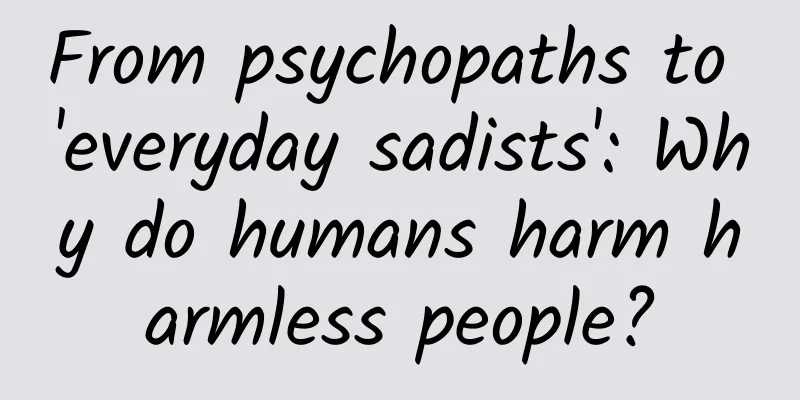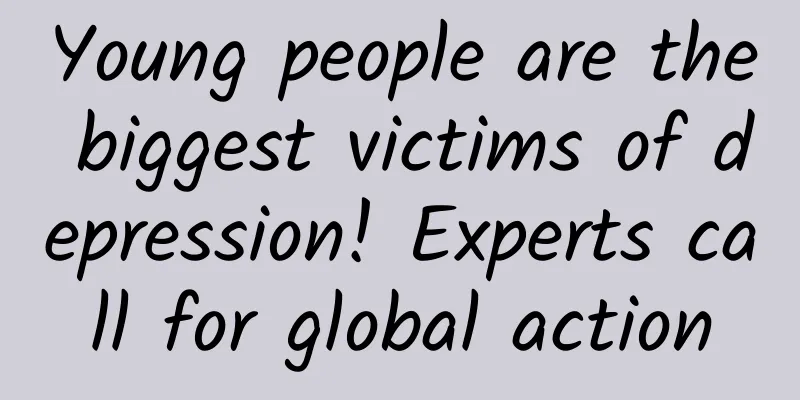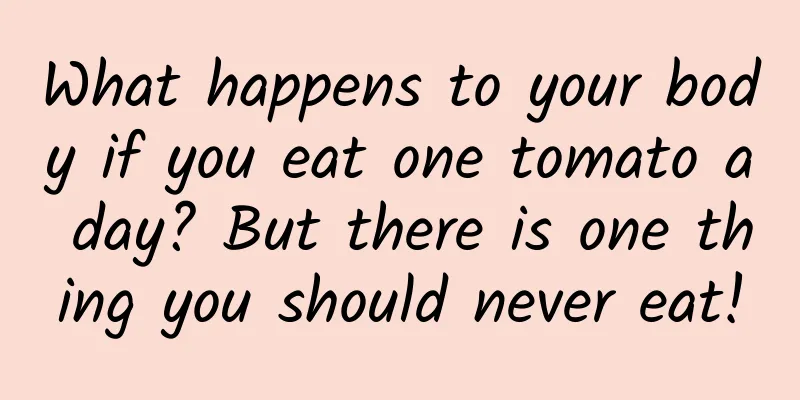From psychopaths to 'everyday sadists': Why do humans harm harmless people?

|
© Digital Journal Leviathan Press: In terms of probability, we have very few chances to encounter psychopaths, but the probability of encountering everyday sadists or becoming sadists is much higher. You can measure your own personality darkness index by referring to the previous articles of Leviathan at the end of the article. Contrary to popular belief, everyday sadists are often more sensitive to the pain of others—which is true if you think about it—if they can’t feel the pain they inflict, then they probably can’t get pleasure from it. If everyday sadism is an adaptive change, then you can understand why Andy Grove said, “In times of increasing turmoil, only the paranoid survive.” In 1658, the French philosopher Blaise Pascal concluded that humans are the glory and dregs of the universe. Today, the situation is almost the same. We love, we hate; we help, we hurt; we lend a hand, we stab deeply. We understand when someone violently attacks another person out of revenge or self-defense, but when someone harms a harmless person, we ask, "How could you do that?" © Google Sites Generally speaking, humans act to gain pleasure or avoid pain. For most of us, harming others causes us to feel their pain, and we don’t like that feeling. This suggests that there are two possible reasons why people harm harmless people—either they can’t feel others’ pain, or they like feeling others’ pain. Another reason people harm harmless people is that they still perceive them as threatening. Someone who doesn't threaten you physically or financially may still be a threat to your social status. This helps explain some puzzling behavior, such as when someone harms someone who has helped them financially. Liberal societies assume that when we make others suffer we harm them. However, some philosophers reject this view. In the 21st century, can we still imagine the attitude that “cruelty is kindness”? Sadists and psychopaths People who get pleasure from hurting or humiliating others are sadists. Sadists feel the pain of others more than normal people do. And they enjoy it—at least they do so during the abuse, though they may feel uncomfortable afterwards. (jamanetwork.com/journals/jamapsychiatry/fullarticle/1107454) The popular imagination often associates sadism with torturers and murderers. However, there is a less extreme and more common form of everyday sadism. Most people recoil from torturing another human being, largely because we can relate to the pain we feel when we are about to hurt someone else. © Alamy Everyday sadists derive pleasure from hurting others or from watching them suffer. They are likely to enjoy gory movies, find fights thrilling, and torture fun. They are rare, but not rare enough. About 6% of undergraduates admit to getting pleasure from hurting others. (open.library.ubc.ca/cIRcle/collections/ubctheses/24/items/1.0369056#downloadfiles) Online trolls can be everyday sadists. © Sander van der Werf/Shutterstock Everyday sadists may be internet trolls or school bullies. In online role-playing games, they may be griefers who ruin other people's gaming experience. Everyday sadists enjoy violent computer games. The more they play, the stronger their sadistic tendencies become. Unlike sadists, psychopaths don't hurt harmless people simply because they get a kick out of it (although they may get a kick out of it). Psychopaths want something. If hurting someone else helps them get what they want, they'll do it. They do this because they are not very capable of feeling empathy, remorse, or fear. Furthermore, they are able to understand other people's feelings without being affected by them themselves. This is a very dangerous skill set. Humans have domesticated themselves over thousands of years. This makes it very difficult for many of us to hurt others. Many people who have hurt, tortured or killed others are haunted by this experience. However, psychopathy means that someone will commit violence without reason. We need to know if we are dealing with a psychopath. We can make a fairly accurate guess just by looking at someone's face or simply interacting with them. Unfortunately, psychopaths know we know this. They fight back by dressing in a way that disguises them, trying to make a good first impression. Not all psychopaths are criminals. © Billion Photos/Shutterstock Thankfully, most people do not have psychopathic traits. Only 0.5% of the population is considered a psychopath. However, among prisoners, approximately 8% of males and 2% of females are psychopaths. (linkinghub.elsevier.com/retrieve/pii/S0160252709000028) (linkinghub.elsevier.com/retrieve/pii/S0160252709000247) But not all psychopaths are dangerous. Antisocial psychopaths may seek excitement from drugs or dangerous activities. However, prosocial psychopaths seek excitement by fearlessly pursuing novel ideas. Since innovative ideas shape our society, prosocial psychopaths could change the world for all of us. However, this can still be a mix of good and bad. Where do these traits come from? No one is really sure why some people become sadists. Some speculate that sadism is an adaptation that helps us kill animals when we hunt. Others believe it helps people gain power. (pubmed.ncbi.nlm.nih.gov/17214016/) Italian philosopher Niccolò Machiavelli once said that “times, not men, create chaos.” In line with this, neuroscience suggests that sadism may be a survival strategy, triggered when times get tough. When certain foods become scarce, our serotonin levels drop. This drop makes us more willing to hurt others because it becomes more pleasurable. (doi.org/10.1073/pnas.1009396107) History is also full of mild forms of sadism, where people get a cheap thrill from mistreating those in a less privileged position. © Alamy Psychopathy may also be an adaptive change. Some studies have established a link between higher levels of psychopathy and increased fertility. However, other studies have found the opposite. This may be because psychopaths only have a reproductive advantage in adverse environments. (onlinelibrary.wiley.com/doi/abs/10.1002/bsl.2038) (www.sciencedirect.com/science/article/abs/pii/S0191886918302642?via%3Dihub) It is true that psychopaths thrive in an unstable, competitive world. Psychopaths’ abilities make them master manipulators. Their impulsiveness and lack of fear make them willing to take risks and seek short-term gains. In the movie Wall Street, psychopath Gordon Gekko made millions. However, while psychopathy may be an advantage in the business world, it actually provides men with only a slight extra edge in leadership. The link between psychopathy and creativity may also explain why it exists. The broader point is that misfits drive innovation, according to mathematician Eric Weinstein. However, if your environment supports creative thinking, the link between misfits and creativity is not so strong. Beautiful can be novel. (link.springer.com/article/10.1007%2Fs10869-014-9386-1) Sadism and psychopathy are also linked to other traits, such as narcissism and Machiavellianism, which, when taken together, are known as the “dark factor of personality,” or D-factor for short. (psycnet.apa.org/record/2018-32574-001) These traits have a moderate to high genetic component. So some people may be born that way. Or, parents with high D-factors may teach their children these traits by abusing them. Likewise, seeing others behave in ways that demonstrate high D-factors may teach us to behave that way ourselves. We all have a role to play in reducing cruelty. Fear and dehumanisation One of the hallmarks of sadism is enjoying the humiliation and harm of others. However, it is often said that it is the "dehumanization" of people that makes us cruel. Potential victims are labeled as dogs, lice or cockroaches, which is said to make it easier for others to hurt them (overcome psychological barriers). There's a reason for this. Research shows that if someone breaks social norms, our brains perceive their faces as less human. This makes it easier for us to punish those who break our rules of conduct. (doi.apa.org/doiLanding?doi=10.1037%2Fxge0000132) It’s sweet to think that if we see someone as a human being, we won’t hurt them. But it’s also a dangerous illusion. Psychologist Paul Bloom argues that our worst atrocities may be precisely the failure to “dehumanize” people. People hurt others precisely because they recognize that they are human beings who don’t want to suffer pain, humiliation or shame. The Nazis perpetrated the Holocaust, dehumanizing and killing millions of innocent victims in concentration camps. © Reuters For example, the Nazis dehumanized Jews by calling them vermin and lice. However, the Nazis also humiliated, tortured, and killed Jews because they saw them as human beings who would be humiliated and suffer as a result of such treatment. Do-gooder derogation Sometimes people even hurt those who are trying to help. Imagine you are playing an economic game in which you and other players have the opportunity to invest in a collective fund. The more money you invest, the more you get in return. Moreover, the fund will pay dividends to all players, regardless of whether they invested or not. At the end of the game, you can pay to punish other players for the amount they invested. To do this, you give up a portion of your earnings, and the player of your choice is then paid. In short, you can be malicious. Some players choose to punish those who invest little or nothing in the collective fund. Other players, however, will pay to punish players who invest more than they do in the collective fund. This behavior seems to make no sense. Generous players will get you more rewards - why would you discourage them? (open.library.ubc.ca/cIRcle/collections/ubctheses/24/items/1.0369056#downloadfiles) This phenomenon is called nice guy devaluation. It is observed around the world. In hunter-gatherer societies, successful hunters are criticized for catching large animals, even though their catch means more meat for everyone. Hillary Clinton may have suffered from nice guy devaluation during the 2016 US presidential election, when she campaigned on the theme of protecting rights. Some people have to work hard to be grateful. © fizkes/Shutterstock Nice guy devaluation exists because we have an anti-dominant tendency. In the economic game above, a less generous player may feel that a more generous player is more likely to be seen as a cooperative partner by others. The more generous the player, the more likely they are to become a dominant player. As the French writer Voltaire said, the best is the enemy of the good. However, there is a hidden benefit to nice guy devaluation. Once we bring the “nice guys” down from their perch, we become more open to their message. One study found that allowing people to express their dislike for vegetarians led them to become less supportive of meat-eating. Shooting the messengers, crucifying them, or making it impossible to elect the messengers might help their message get across. (journals.sagepub.com/doi/10.1177/1948550611415695) The future of cruelty In the movie Whiplash, a music teacher uses cruel words and actions to encourage one of his students to become a great drummer. We might recoil at such tactics. However, German philosopher Friedrich Nietzsche believed that our aversion to such cruelty is too deep. © Primo GIF For Nietzsche, cruelty allows teachers to develop from one criticism to the next, for the good of the other person. People can also become who they want to be by being cruel to themselves. Nietzsche believed that enduring abuse can cultivate courage, endurance, and creativity. Should we be more willing to let others suffer as well as ourselves in order to cultivate virtue? Arguably not. We now know that being abused by others can have terrible long-term effects, including damage to physical and mental health. There is also a growing awareness of the benefits of being compassionate to ourselves, rather than abusing ourselves. Human history is stained by violence and cruelty, often targeting vulnerable groups who posed no threat. (Note: The sign in the photo reads, "The Killing Tree. This is where the executioners beat the children.") © Alamy Furthermore, the idea that we must suffer in order to grow is questionable. Positive life events, such as falling in love, having children, and achieving cherished goals, can lead to growth. Teaching through cruel words and deeds invites abuse of power and selfish sadism. However, Buddhism offers another answer: angry compassion. In this attitude, we confront others out of love, protecting them from greed, hatred, and fear. Life can be cruel, and the truth can be cruel, but we can choose not to be cruel. By Simon McCarthy-Jones Translated by Kushan Proofreading/Rabbit's Light Footsteps Original article/theconversation.com/from-psychopaths-to-everyday-sadists-why-do-humans-harm-the-harmless-144017 This article is based on the Creative Commons Agreement (BY-NC) and is published by Kushan on Leviathan The article only reflects the author's views and does not necessarily represent the position of Leviathan |
<<: What is wild rice stem? Do I need to peel it?
>>: Xinfadi salmon, not unfair!
Recommend
See the other side of a woman from her eating habits
Although men eat in many different ways, they pal...
What to do if pregnant women have athlete's foot
We all know that women’s immunity is particularly...
Can I get pregnant if I have sex two days after taking birth control pills?
As the saying goes: People make mistakes and hors...
Gynecological disease leucorrhea with blood, what is going on
Bloody vaginal discharge is a common phenomenon a...
Cervical erosion 3 completed minimally invasive surgery
Cervical erosion is a common disease among women....
How to deal with female vulva itching
I believe that female friends must be familiar wi...
What is the function of feminine care solution
Female friends who love beauty will find ways to ...
Stay away, stay away! The outbreak has entered its peak period →
According to the China National Radio website, so...
What ingredients are used in beef hotpot? How is beef hotpot prepared?
Beef protein contains a lot of essential amino ac...
Does riding a bicycle affect women's private parts?
Women who enjoy riding bicycles or exercise bikes...
Is surgery necessary for cervical polyps?
Important reminder: Cervical polyps are a very co...
What can you eat to make your ovaries younger?
If the ovaries are young, the woman will be young...
What is the best and fastest way to enlarge breasts?
I believe that every adult female friend wants to...
What happens if you have menstruation after sex?
Menstruation is something that every woman cannot...
Beware! Two more cases of Omicron infection detected in China! The latest assessment by the National Health Commission...
From 0:00 to 24:00 on December 18, 83 new confirm...









